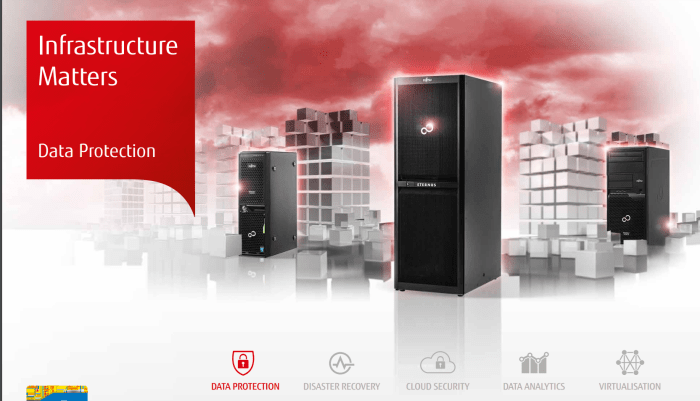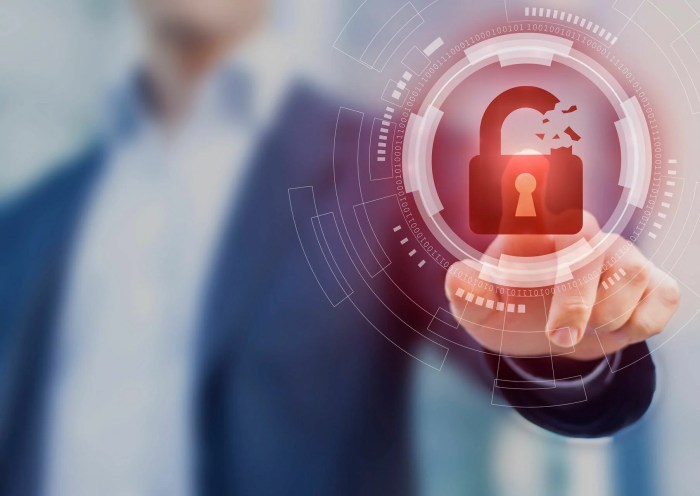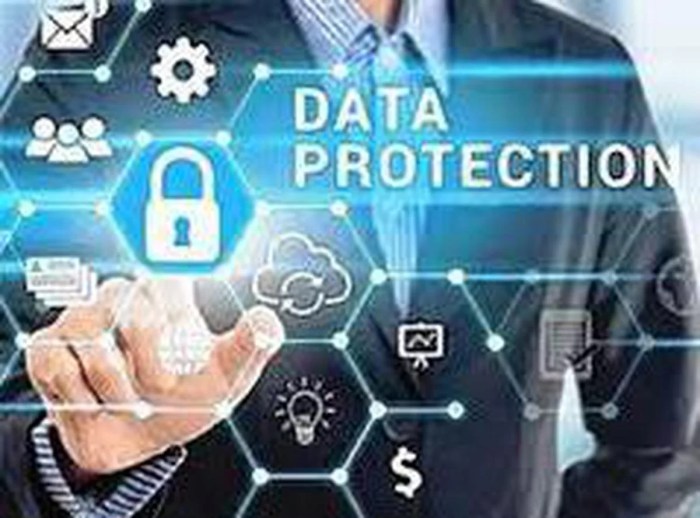Software to protect data – In today’s digital landscape, data security is paramount. From personal information to sensitive business records, the potential consequences of a data breach are severe. This comprehensive guide explores the various types of data protection software available, their functionalities, and how to choose the right solution for your specific needs. We’ll delve into key aspects like encryption, access control, data loss prevention (DLP), and more, equipping you with the knowledge to safeguard your valuable information.
Understanding the Need for Data Protection Software
The increasing reliance on digital systems and the interconnected nature of modern networks have amplified the risks of data breaches. Cyberattacks, human error, and accidental data loss are constant threats. Robust data protection software serves as a crucial first line of defense, mitigating these risks and ensuring data integrity, confidentiality, and availability. This is often referred to as the CIA triad of information security.
Types of Data Breaches and Their Impact
- Malware Attacks: Viruses, ransomware, and Trojans can encrypt, steal, or destroy data.
- Phishing Scams: Deceptive emails or websites trick users into revealing sensitive information.
- Insider Threats: Malicious or negligent employees can compromise data security.
- Data Loss: Accidental deletion, hardware failure, or natural disasters can lead to irretrievable data loss.
- SQL Injection Attacks: Exploiting vulnerabilities in database applications to gain unauthorized access.
The consequences of a data breach can be devastating, including financial losses, reputational damage, legal penalties (like GDPR fines), and loss of customer trust. Investing in effective data protection software is a proactive measure to minimize these risks.
Key Features of Data Protection Software: Software To Protect Data
Data protection software encompasses a range of functionalities designed to safeguard data at various levels. Key features include:
1. Data Encryption
Encryption transforms data into an unreadable format, protecting it from unauthorized access even if intercepted. Different encryption methods exist, including symmetric (using the same key for encryption and decryption) and asymmetric (using separate keys). Strong encryption algorithms, such as AES-256, are crucial for robust protection. This is particularly important for data at rest (stored on hard drives) and data in transit (transmitted over networks).

Source: infosecuritywire.com
2. Access Control
Access control mechanisms restrict access to sensitive data based on user roles and permissions. Role-Based Access Control (RBAC) is a common approach, assigning specific privileges to different user groups. Multi-factor authentication (MFA) adds an extra layer of security, requiring multiple forms of verification (e.g., password, one-time code, biometric scan) before granting access. This significantly reduces the risk of unauthorized access, even if passwords are compromised.
3. Data Loss Prevention (DLP), Software to protect data
DLP software monitors and prevents sensitive data from leaving the organization’s control. This includes preventing unauthorized copying, printing, or emailing of confidential information. DLP solutions often employ techniques like content inspection and data classification to identify and protect sensitive data across various channels, including email, cloud storage, and external devices.

Source: windowsreport.com
4. Backup and Recovery
Regular backups are essential for data recovery in case of data loss due to hardware failure, cyberattacks, or natural disasters. Data protection software often includes backup and recovery features, enabling automated backups to local or cloud storage. Disaster recovery planning is crucial to ensure business continuity in the event of a major disruption.

Source: businessfig.com
5. Intrusion Detection and Prevention Systems (IDPS)
IDPS monitor network traffic for suspicious activity, identifying and preventing potential security breaches. Intrusion detection systems (IDS) identify malicious activity, while intrusion prevention systems (IPS) actively block or mitigate threats. These systems play a vital role in protecting against various cyberattacks.
6. Security Information and Event Management (SIEM)
SIEM systems collect and analyze security logs from various sources, providing a centralized view of security events. This helps identify security threats, investigate incidents, and improve overall security posture. SIEM systems are crucial for proactive threat detection and response.
Choosing the Right Data Protection Software
Selecting the appropriate data protection software depends on several factors, including:
- Type of data: The sensitivity and volume of data to be protected.
- Budget: The cost of software licenses and implementation.
- Scalability: The ability to adapt to future growth and changing needs.
- Integration: Compatibility with existing IT infrastructure and applications.
- Compliance requirements: Meeting industry regulations (e.g., HIPAA, GDPR).
Consider consulting with IT security professionals to assess your specific needs and choose the most suitable solution. A thorough risk assessment can help identify vulnerabilities and prioritize data protection measures.
Frequently Asked Questions (FAQ)
- Q: What is the difference between data encryption and data masking?
A: Data encryption transforms data into an unreadable format, while data masking replaces sensitive data with non-sensitive substitutes, preserving the data structure while protecting sensitive information. - Q: How often should I back up my data?
A: The frequency of backups depends on the criticality of the data. For critical data, daily or even continuous backups may be necessary. - Q: What is the role of a SIEM system in data protection?
A: SIEM systems provide centralized monitoring and analysis of security events, enabling proactive threat detection and incident response. - Q: What is ransomware and how can I protect myself?
A: Ransomware is malware that encrypts data and demands a ransom for its release. Protection involves regular backups, strong anti-malware software, and user education on phishing scams. - Q: What is GDPR and how does it relate to data protection?
A: The General Data Protection Regulation (GDPR) is a European Union regulation that sets strict standards for data protection and privacy. Organizations must comply with GDPR requirements to protect personal data.
Resources
- National Institute of Standards and Technology (NIST)
- Cybersecurity and Infrastructure Security Agency (CISA)
- EC-Council
Call to Action
Protecting your valuable data is a continuous process. Investing in robust data protection software and implementing best practices are crucial for mitigating risks and ensuring business continuity. Contact us today to discuss your data protection needs and discover how we can help you secure your information.
Quick FAQs
What is the difference between antivirus and anti-malware software?
Antivirus software primarily targets viruses, while anti-malware software has a broader scope, encompassing various threats like spyware, ransomware, and Trojans.
How often should I update my security software?
Security software updates should be performed automatically whenever available, typically daily or weekly, to address newly discovered vulnerabilities.
Is cloud-based data storage secure?
Cloud storage can be secure, but it depends on the provider’s security measures. Choose reputable providers with strong encryption and security protocols.
What is two-factor authentication (2FA), and why is it important?
2FA adds an extra layer of security by requiring a second form of verification, like a code from your phone, in addition to your password, making it significantly harder for unauthorized users to access your accounts.
